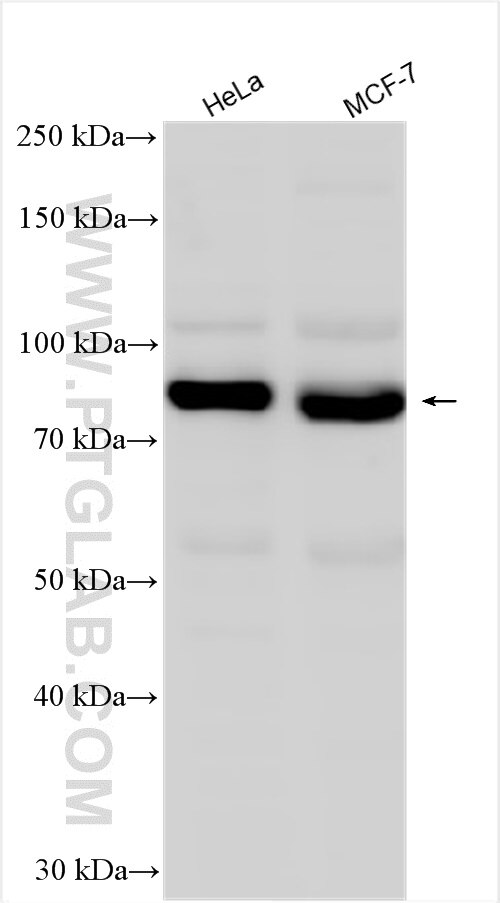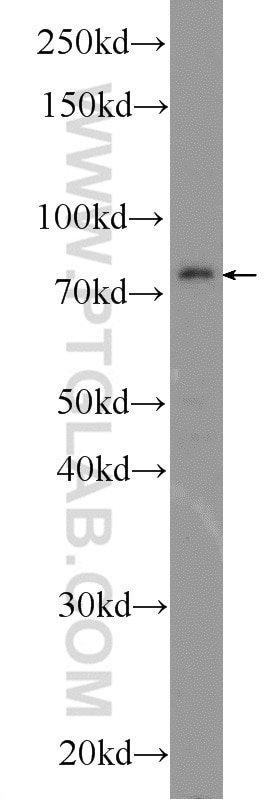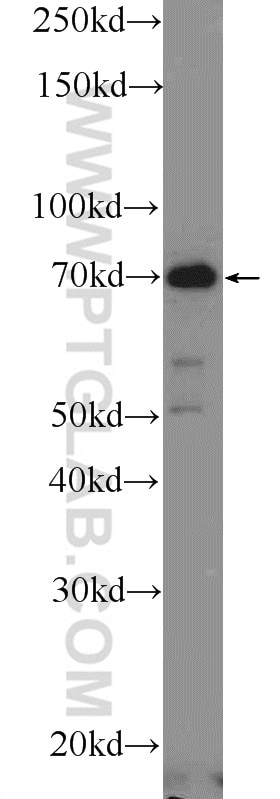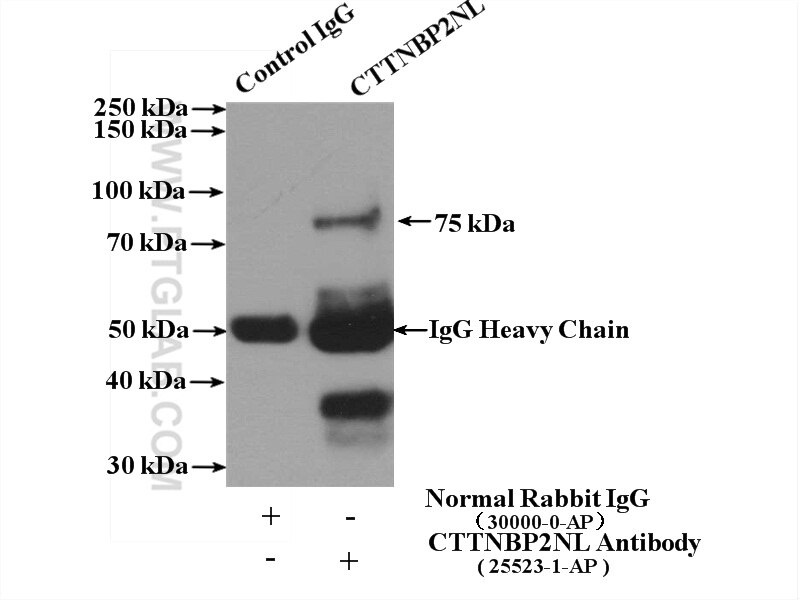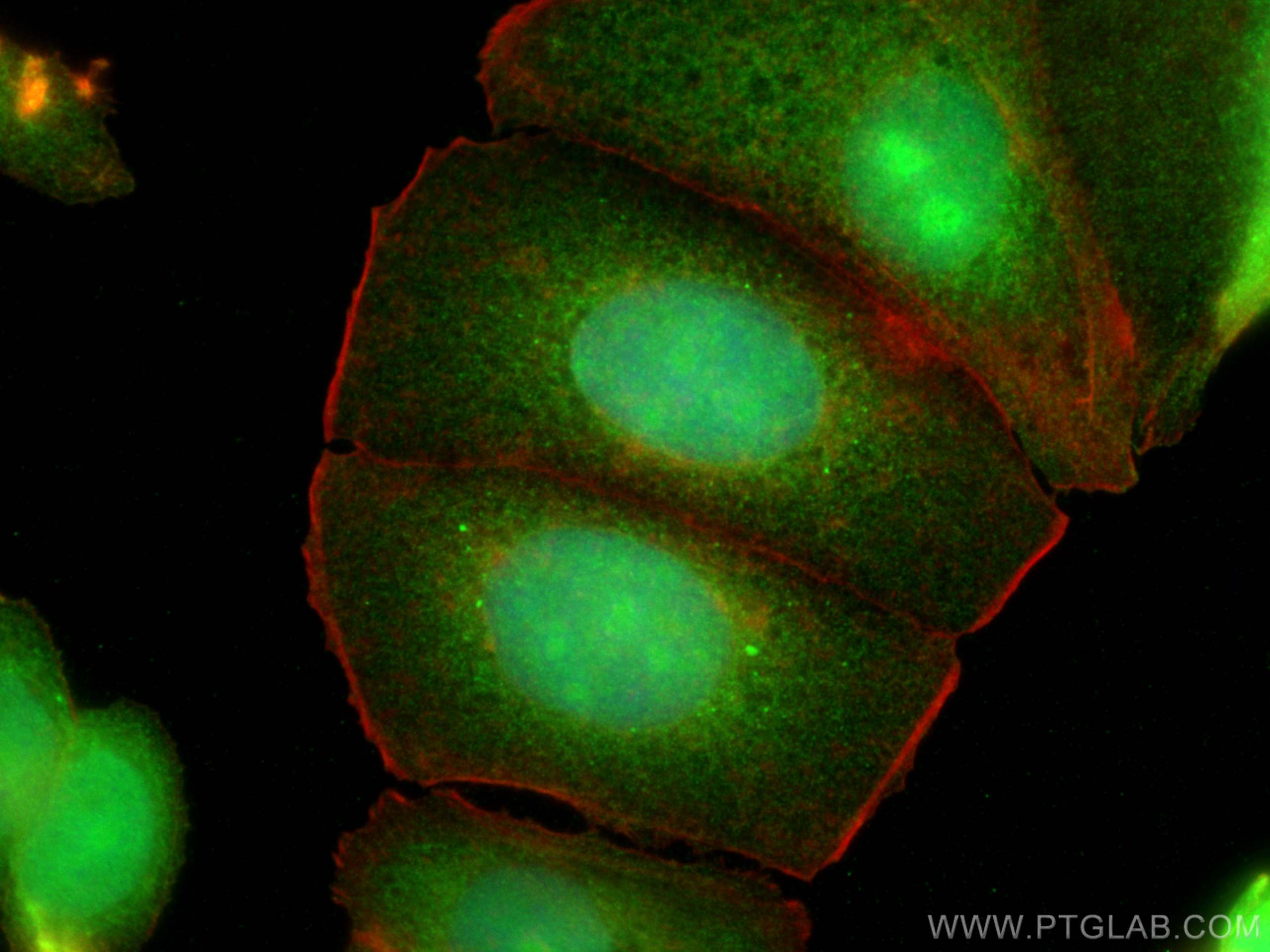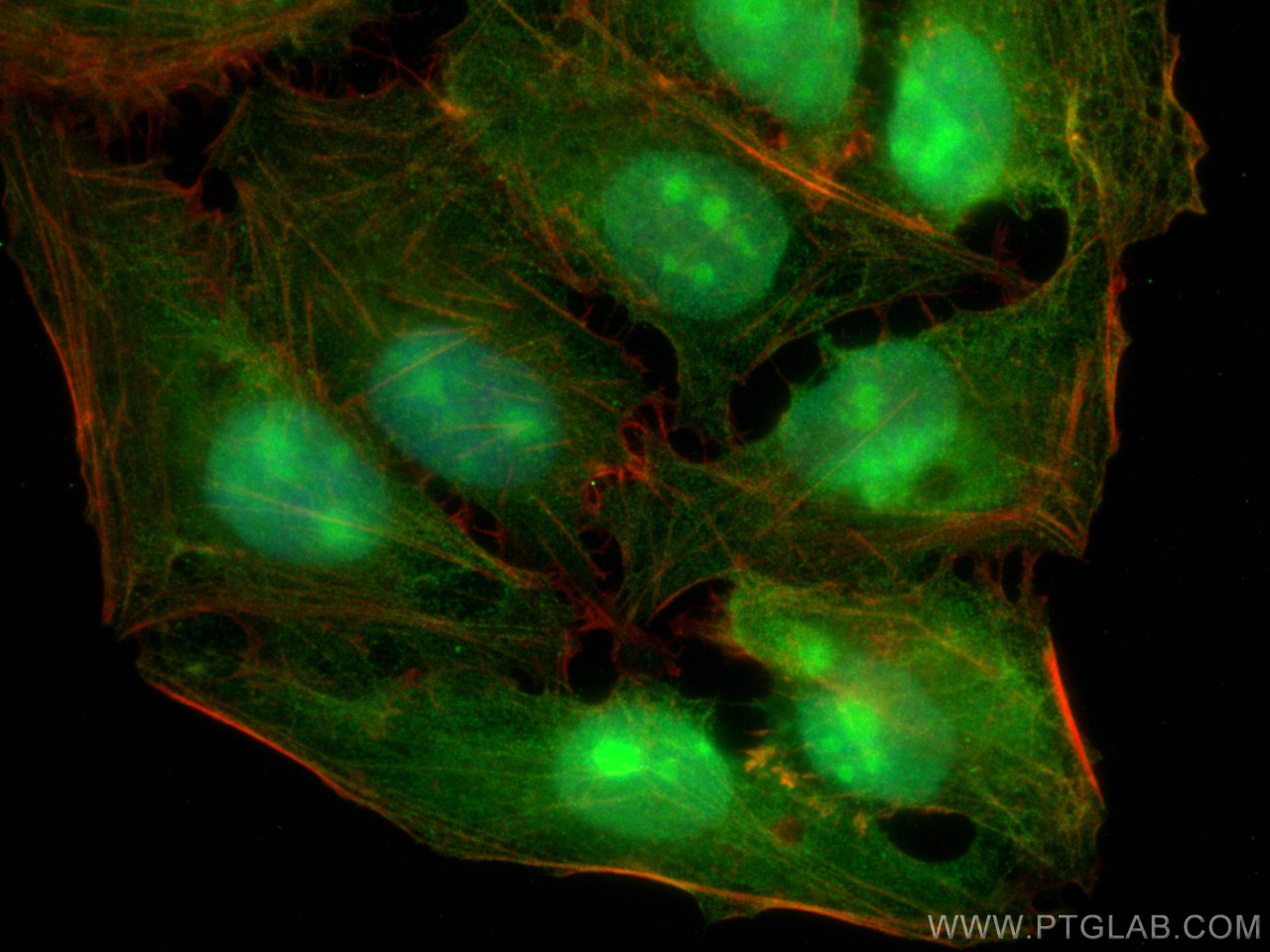CTTNBP2NL Polyclonal antibody
CTTNBP2NL Polyclonal Antibody for WB, IP, IF, ELISA
Host / Isotype
Rabbit / IgG
Reactivity
human, mouse
Applications
WB, IP, IF, ELISA
Conjugate
Unconjugated
Cat no : 25523-1-AP
Synonyms
Validation Data Gallery
Tested Applications
| Positive WB detected in | HeLa cells, MDA-MB-453s cells, mouse skin tissue, MCF-7 cells |
| Positive IP detected in | MCF-7 cells |
| Positive IF detected in | U2OS cells, MCF-7 cells |
Recommended dilution
| Application | Dilution |
|---|---|
| Western Blot (WB) | WB : 1:2000-1:12000 |
| Immunoprecipitation (IP) | IP : 0.5-4.0 ug for 1.0-3.0 mg of total protein lysate |
| Immunofluorescence (IF) | IF : 1:200-1:800 |
| It is recommended that this reagent should be titrated in each testing system to obtain optimal results. | |
| Sample-dependent, Check data in validation data gallery. | |
Published Applications
| WB | See 1 publications below |
Product Information
25523-1-AP targets CTTNBP2NL in WB, IP, IF, ELISA applications and shows reactivity with human, mouse samples.
| Tested Reactivity | human, mouse |
| Cited Reactivity | human |
| Host / Isotype | Rabbit / IgG |
| Class | Polyclonal |
| Type | Antibody |
| Immunogen | CTTNBP2NL fusion protein Ag22137 |
| Full Name | CTTNBP2 N-terminal like |
| Calculated Molecular Weight | 639 aa, 70 kDa |
| Observed Molecular Weight | 70-75 kDa |
| GenBank Accession Number | BC016029 |
| Gene Symbol | CTTNBP2NL |
| Gene ID (NCBI) | 55917 |
| RRID | AB_2880117 |
| Conjugate | Unconjugated |
| Form | Liquid |
| Purification Method | Antigen affinity purification |
| Storage Buffer | PBS with 0.02% sodium azide and 50% glycerol pH 7.3. |
| Storage Conditions | Store at -20°C. Stable for one year after shipment. Aliquoting is unnecessary for -20oC storage. 20ul sizes contain 0.1% BSA. |
Protocols
| Product Specific Protocols | |
|---|---|
| WB protocol for CTTNBP2NL antibody 25523-1-AP | Download protocol |
| IF protocol for CTTNBP2NL antibody 25523-1-AP | Download protocol |
| IP protocol for CTTNBP2NL antibody 25523-1-AP | Download protocol |
| Standard Protocols | |
|---|---|
| Click here to view our Standard Protocols |
Publications
| Species | Application | Title |
|---|---|---|
